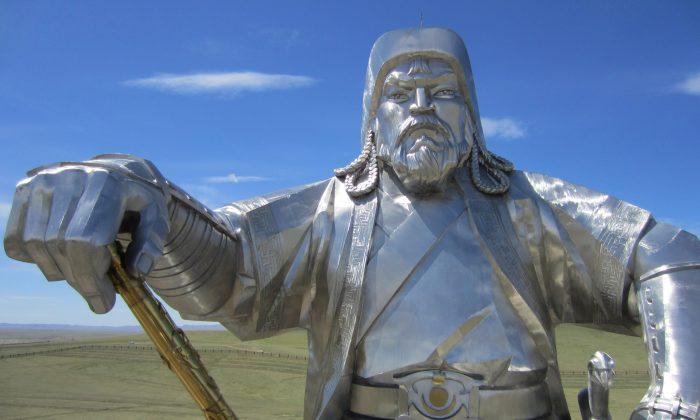Legend holds that in very ancient times alongside gold and silver, another precious metal was coveted and mined in Atlantis. That metal was called orichalcum, and researchers believe it was discovered in large quantities in a 2,600 year-old shipwreck off the coast of Sicily, as announced earlier this year.
The ship carrying the metal, which fits the description of orichalcum, sank off the coast of Gela near southern Sicily as it was coming into port. The wreck probably occurred as a result of the ship being caught in a storm.
“The wreck dates to the first half of the 6th century [B.C.],” said Sebastiano Tusa, Sicily’s superintendent of the Sea Office, according to Discovery News. “It was found about 1,000 feet from Gela’s coast at a depth of 10 feet.”
The ship probably was on its way from Greece or Asia Minor. Its cargo included 39 ingots (or rectangular bars, blocks, or bricks) of the precious metal. Orichalcum was considered a mysterious metal even in the days of Plato, who wrote about it in his “Critias Dialogue” in 360 B.C. By this time it was known only by name, not by sight.
“All the outside of the temple (dedicated to Poseidon and Cleito), with the exception of the pinnacles, they covered with silver, and the pinnacles with gold,” wrote Plato, as translated by Benjamin Jowett and published by The Internet Classics Archive of the Massachusettes Institute of Technology. “In the interior of the temple the roof was of ivory, curiously wrought everywhere with gold and silver and orichalcum; and all the other parts, the walls and pillars and floor, they coated with orichalcum.”
But, what was orichalcum, exactly? Since it doesn’t appear on the periodic table of elements, it certainly wasn’t a standalone metal. It is commonly believed to be an alloy, or combination of metals in a certain proportion. But, the exact formula has been debated by scientists and scholars throughout history.
Moreover, Plato describes the metal as reflecting a red tint: “The entire circuit of the wall, which went round the outermost zone, they covered with a coating of brass, and the circuit of the next wall they coated with tin, and the third, which encompassed the citadel, flashed with the red light of orichalcum.”
It is said that orichalcum was invented by Cadmus, a character in Greek mythology who is also said to be responsible for the founding of Thebes and for bringing the alphabet to Greece from Phoenicia.
Dario Panetta of Technologies for Quality (TQ) analyzed the composition of the ingots using X-ray fluorescence. It turns out that the 39 ingots were made of about 75-80 percent copper, 15-20 percent zinc, and remaining percentages of nickel, lead, and iron, he told Discovery News.
This composition is similar to modern brass, an alloy of copper and zinc. Scholars have traditionally though of orichalcum as an alloy similar to brass which could have been made in ancient times by cementation in a crucible through a reaction with zinc ore, charcoal, and copper.
“Nothing similar has ever been found,” continued Tusa. The city of Gela was founded in 689 B.C. and grew to become a wealthy one with a wide array of artisan workshops. Tusa believes that the orichalcum was destined to be used in artisan shops and crafted into high quality decorations.
*Image of a bronze nugget and an illustration of a sunken city via Shutterstock




